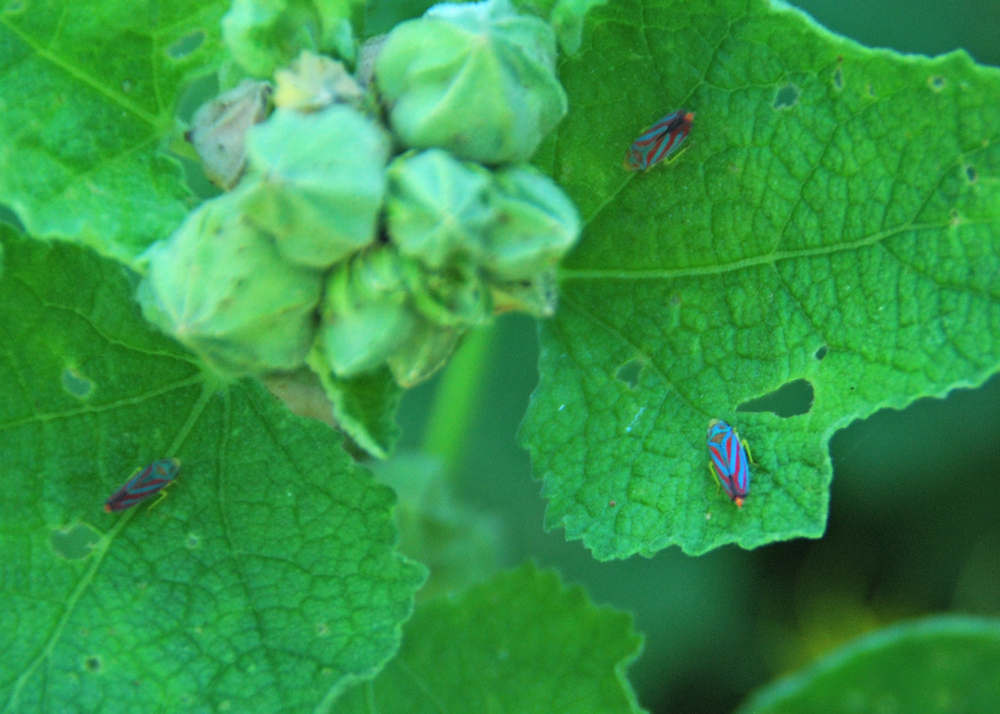28 May Safely Manage Insect Pests in Your Gardens
Melinda Myers
Melinda Myers has written more than 20 gardening books, including Small Space Gardening. She hosts The Great Courses ‘How to Grow Anything: Food Gardening for Everyone’ DVD set and the nationally syndicated Melinda’s Garden Moment TV & radio segments. Myers is a columnist and contributing editor for Birds & Blooms magazine and was commissioned by AAS for her expertise to write this article. Myers’ web site is www.melindamyers.com.
Photo credit: Longfield Gardens
Safely Manage Insect Pests in Your Gardens
by Melinda Myers
You plant and tend your garden hoping to enjoy a bountiful harvest and beautiful blooms. Despite proper planning and planting, insects can move in and wreak havoc on your garden. The good news is you can manage problem pests without harming the pollinators that are so important to your garden.

Start by reviewing the care your plants need to thrive. Make sure you are watering thoroughly and only when needed. Consider mulching the soil with shredded leaves, evergreen needles or other organic material to conserve moisture, moderate soil temperature, suppress weeds and improve the soil as they decompose.
Only fertilize if needed. Over fertilization, especially with high nitrogen and fast release products, can stimulate lush, succulent growth that is more susceptible to insect damage. Let your plants, not the fertilizer label, be your guide. Pale plants and those not performing as expected may need a nutrient boost. Consider a low nitrogen slow release fertilizer that won’t stimulate lush, succulent growth or damage the plants when the weather is hot and dry.
Tolerate a bit of damage and wait for the songbirds and beneficial insects, like lady beetles and green lacewings, manage these pests for you. If the damage is more than you can tolerate, consider using an eco-friendly control product.
One you may not be familiar with is lightweight horticulture oil, like the OMRI-certified Summit Year-Round® Spray Oil (YRSO). This can be applied to garden plants during the growing season to manage insects such as aphids, mites, adelgids, scale, leafhoppers and whiteflies. Horticultural oils have been used for many years because they are low risk and effective against a variety of pests.
Horticulture oils kill insects by blocking the air holes through which they breathe. This makes them effective against all stages of the insect’s development from egg through adult.
The oil must contact the insect to be effective. If a beneficial insect lands on a treated plant, it will not be injured. Avoid treating plants when bees and other beneficial insects are present, so you do not accidently spray them with the oil.
YRSO horticulture oil (SummitResponsibleSolutions.com) can also help reduce the incidence and spread of aphid-transmitted viruses. It interferes with insect feeding which helps reduce the transmission of the virus by the insect.
Lightweight horticulture oils have a minimal waiting period between the last application and harvest. Always check the label before using any product whether organic, natural or synthetic. You will find valuable information on the label, including application rates and directions to help you attain the best results.
You may also find some added benefits when reviewing the label. Horticulture oils can help in managing powdery mildew on plants like beebalm, phlox, peonies and cucumbers. Some can be applied when plants are dormant to smother and kill overwintering mites and aphids as well as egg masses of pests like the gypsy moth.
Throughout the summer. You will enjoy watching your plants grow, make timely harvests and discover insect pests when the populations are small and much easier to manage.
Melinda Myers has written more than 20 gardening books, including Small Space Gardening. She hosts The Great Courses and the nationally-syndicated Melinda’s Garden Moment TV & radio program. Myers is a columnist and contributing editor for Birds & Blooms magazine and was commissioned by Summit for her expertise to write this article. Myers’s web site is www.melindamyers.com.
June 14 is celebrated across the country as Flag Day. The United States honors our flag and commemorates the flag’s adoption. One the same day, the United States Army celebrates its birthday. President Woodrow Wilson established by Proclamation the Flag Resolution of 1777 in 1916. It is not a national holiday. What do people do? Americans reflect on the foundations of the nation’s freedom, their loyalty to the nation, reaffirm their belief in liberty and justice, as well as observe the nation’s unity. Many display the American flag at homes and in public buildings. Following Flag Day is Honor America Days, a 21 day period through to Independence Day, July 4, seeking ways in which to honor America.




Sorry, the comment form is closed at this time.